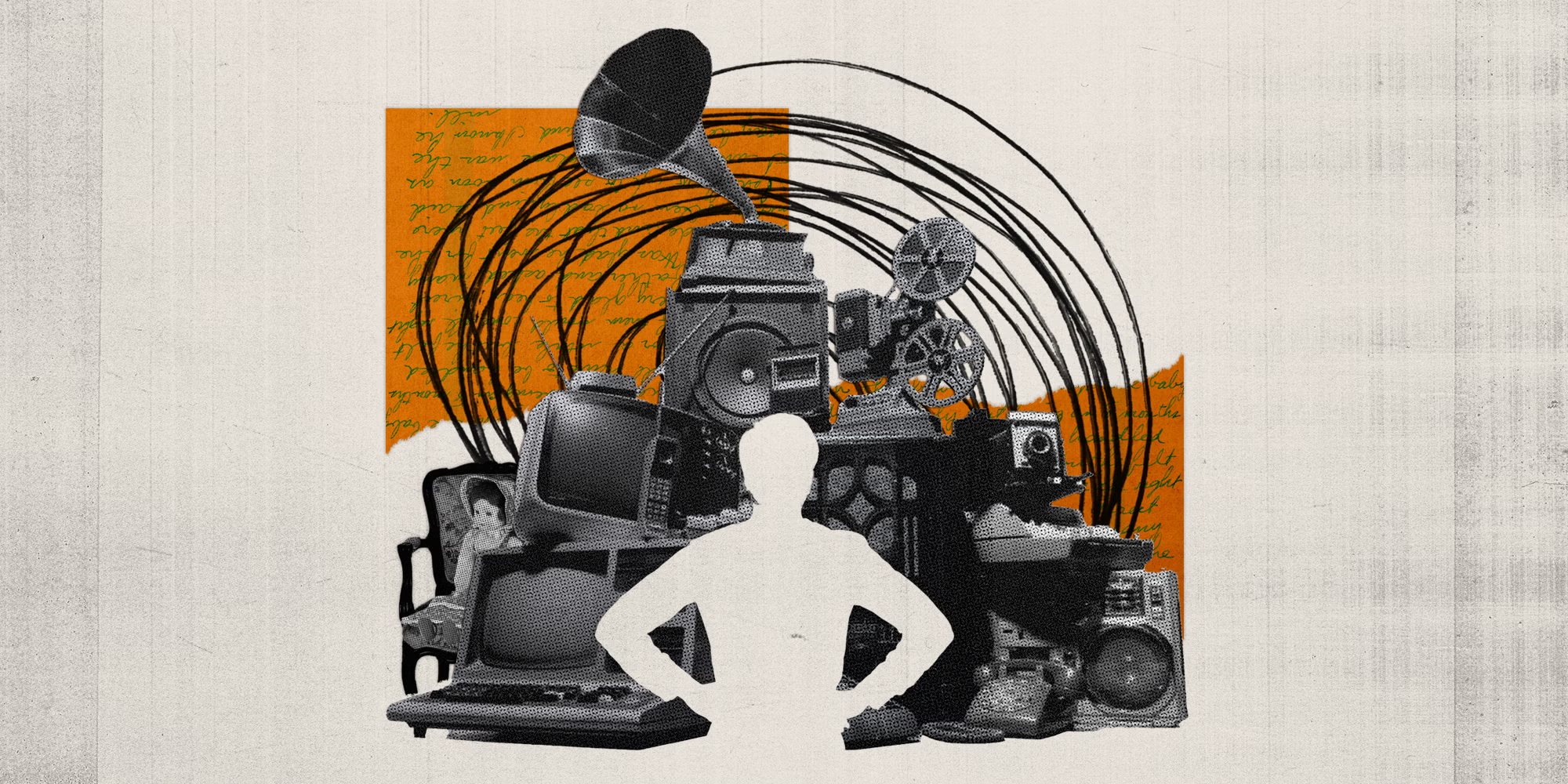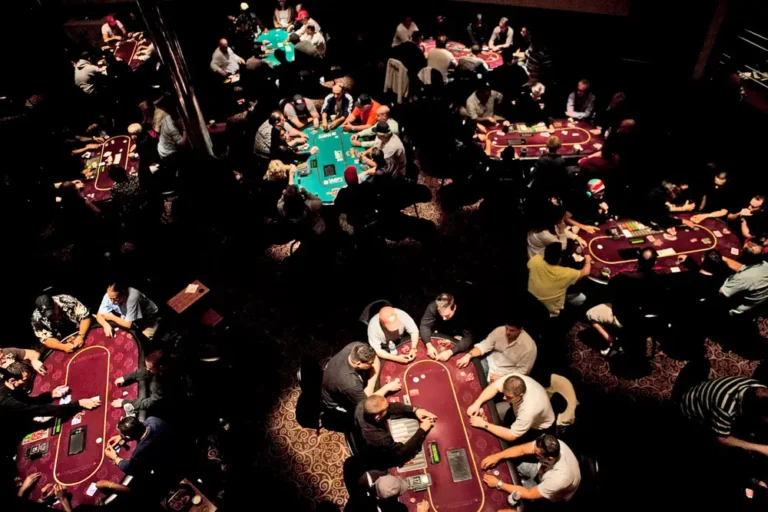The Boomer Stuff AvalancheMillennials are about to be crushed by all the junk their parents accumulated.

Every time Dale Sperling’s mother pops by for her weekly visit, she brings with her a possession she wants to pass on. To Sperling, the drop-offs make it feel as if her mom is “dumping her house into my house.” The most recent offload attempt was a collection of silver platters, which Sperling declined.
“Who has time to use silver? You have to actually polish it,” she told me. “I’m like, ‘Mom, I would really love to take it, but what am I going to do with it?’ So she’s dejected. She puts it back in her car.”
It’s not that Sperling, 46, wants to be rude to her baby-boomer mother; it’s just that she has plenty of her own stuff. Plus, her father died in 2021, and they’re still trying to figure out what to do with everything he had. He owned an arcade in New York City and amassed closets full of collectibles — magazines, posters, memorabilia, coins, buttons. Her mother is too upset to look at it, so little by little, Sperling and her sister have been going through everything. Deciding what to do with a lifetime of things is a monumental task.
“It can’t just rot in her basement, and then what?” Sperling said.
Sperling’s parents thought everything they were accumulating was going to be worth money, so they saved it. And sure, maybe some of the posters would sell for $40 on Facebook Marketplace, but who really wants to deal with the hassle? Sperling’s mom brought over her dad’s penny collection for her kids to go through. It seemed like a fun activity at first, but it got old fast, and the “best” penny they found was worth about $6.
“It’s just the volume of things that we’ll have to go through,” she said. “It’s not the stuff. It’s the time.”
Sperling’s conundrum is familiar to many people with parents facing down their golden years: After they’ve acquired things for decades, eventually, those things have to go. As the saying goes, you can’t take it with you. Many millennials, Gen Xers, and Gen Zers are now facing the question of what to do with their parents’ and grandparents’ possessions as their loved ones downsize or die. Some boomers are even still managing the process with their parents. The process can be arduous, overwhelming, and painful. It’s tough to look your mom in the eye and tell her that you don’t want her prized wedding china or that giant brown hutch she keeps it in. For that matter, nobody else wants it, either.
“The reality is that we live in a world that is overinundated with stuff, and the value of things that people hold dear and that they paid a lot of money for and they think retained value is not so much, which is unfortunate,” Sarah Hersh, a co-owner of Ben Hersh Estate Sales in New Jersey, said. “We have more stuff than we need, and less of it is desirable to other people than we think it’s going to be.”
Much has been made of the impending “great wealth transfer” as baby boomers and the Silent Generation pass on a combined $84.4 trillion in wealth to younger generations. Getting less attention is the “great stuff transfer,” where everybody has to decipher what to do with the older generations’ things.
“What we’re finding unilaterally across the board, pretty much without exception — you’ll get a random exception — but the millennials are saying, ‘No, I don’t want your stuff. I barely want my stuff,'” said Mary Kay Buysse, co-executive director of the National Association of Senior & Specialty Move Managers, a nonprofit trade association.
Millennials are saying, ‘No, I don’t want your stuff. I barely want my stuff.’
In some ways, this is a timeless problem — every generation accumulates things, and younger generations rebel against older generations’ tastes. But the sheer size of the current problem is unprecedented given that baby boomers are an extra-materialistic breed. They grew up in a time of economic prosperity, were raised by parents for whom the Great Depression loomed large, and hit their prime in the ’80s, when people were driving around with bumper stickers reading, “He who dies with the most toys wins.” They’re also collectors — they stocked up on Hummel figurines and Bing & Grøndahl plates and picked up a souvenir every time they went on vacation.
In short, boomers love stuff, and not just their stuff. They held on to their parents’ stuff when they inherited it, and a lot of them are sitting with their kids’ stuff in their attics now, too. Sometimes, the sheer task of organizing and purging is so daunting that retirees who are ready and excited to move don’t, opting instead to stay put with their collection of trinkets.
“It’s three generations of stuff,” Mindy Godding, a professional organizer and the owner of Abundance Organizing, said. And because boomers have famously been remaining in their homes, the situation is even worse. “The longer it’s been since you’ve been through a major transition, like a move or renovation, the more things can pile up and accumulate in the nooks and crannies in your house,” Godding added.
In an ideal scenario, families would gather with plenty of time on hand to cull everything. Parents figure out who among their children and grandchildren want what, what lands in the “keep” pile, what’s worth money, and what can hopefully be donated. (Though FYI, a lot of Goodwill stores no longer take furniture.) But life is often not an ideal scenario — families instead find themselves in a bit of a fire-sale situation, where a parent is ill and needs to move fast, or a loved one has died, or just nobody realized how long any of this would take.
“One of the things people don’t realize when they’re acquiring across 50, 60, 70, 80 years is that it actually costs a lot or is a lot of work to get rid of it as well, and often that is in a time when people are in a crisis mode,” Elizabeth Hirsh, the owner of the Downsizers in North Carolina, said.
Beyond the logistical issues, family dynamics are complicated. Styles change, and younger generations often don’t like or need the things their parents have, but explaining that can be tricky. Sure, everybody wants Mom’s ring, but nobody knows what to do with that spoon collection.
“It’s just tough,” said Wen Stone, a high-end estate liquidator in Dallas with his mother, Janelle. “The parents are just scared and guilty, and the kids are guilty to say no.”
Trying to smooth over generational differences in taste can be knotty. Millennials are more mobile than their parents. They’re also more minimalist, to some extent, and they love that millennial gray. Boomers got a kick out of having a bunch of trinkets from their travels and big brown furniture and colorful glassware and fancy china. Their kids don’t even have a dining room.
“The children are looking around at this volume of possessions and are completely overwhelmed,” Godding said. “Their parents are also overwhelmed by the stuff, and it’s almost like an avoidance strategy of like, ‘Oh, I’ll just have my kids deal with it.’ Nobody wants to take this on.”
The what-to-do-with-all-this-stuff conundrum has two sides to it — financial and sentimental. As more people confront both sides of the problem, a whole cottage industry of downsizers, estate sellers, and auctioneers has popped up to make the process easier, for a price.
For Ben Miller, a New York antique-silver specialist and the host of the “Curious Objects” podcast, part of his job is breaking people’s hearts. A lot of people amass so many things believing they’ll be worth something someday, and are disappointed to find out when they aren’t. Clients come to him with, say, a tea set their parents coveted for decades, firmly believing that when they died, their kids at the very least would be able to sell it for a nice return. Or they’ve been watching a lot of “Antiques Roadshow,” and they’re hoping their trash is treasure.
The market value of the object and the sentimental value don’t always go hand in hand.
“The happy version of that story is they’re right, and it is something that is really valuable,” he said. “The much more common story is it’s worth much less than they anticipated, or perhaps almost nothing at all.”
It’s painful to watch. Miller tries to approach the situation with empathy. “I often emphasize the idea that the market value of the object and the sentimental value don’t always go hand in hand,” he said. “That can be disappointing from a budgetary perspective, but there’s no reason that has to be disappointing from an emotional perspective.”
Our cognitive biases — namely, the endowment effect — make us believe items we own are more valuable than they are, Stephanie Preston, a psychologist at the University of Michigan, said. And sometimes, it’s hard to abandon that notion. “People get yoked into how much they paid,” she added.
Buysse recently took her wedding china to a church rummage sale. When she got it in 1978, it was worth thousands of dollars. The rummage-sale people put an $80 price tag on it, and it didn’t sell. It’s classic economics: supply and demand.
Even when the question of monetary value is settled, the issue of sentimental value remains and can be even more pertinent. A lot of parents hope their kids will want their things, but they don’t. Those can be tough conversations on both sides. It’s difficult to throw away things that mean something to you. It’s also a challenge to tell a loved one that you don’t want the thing they loved.
“It is really common for us to hold on to items because we feel an obligation to take care of that item on behalf of someone that we’ve loved and usually lost,” Godding said.
It leads to a lot of deferred decisions — too many items wind up in the “maybe” pile, or they end up taking begrudging space in the garage. Or, worst-case scenario, they land in a storage unit, which every professional I spoke with for this story said is a big no-no. Dad puts stuff in storage, pays $150 a month on it for 10 years, dies, and suddenly everyone realizes he spent $18,000 housing items nobody still wants.
“Never get a storage unit,” Janelle Stone from Dallas said. “It’s a cuss word.”
Practically everyone I’ve told about this story in the past couple of weeks has had a personal anecdote to share about the impending avalanche of boomer stuff. One person had promised to take her in-laws’ dining set, even though she has no space for it because she already has the one from her parents. Those same in-laws have what she described as a “pathological obsession with not giving away their china.” Another is navigating his father’s early dementia diagnosis, which entails both figuring out Medicare and digging through his parents’ basement, which is filled with his grandparents’ stuff. When his daughter was born, his parents gave him a play kitchen he and his sister had used in the ’80s. “Now I have it in my basement for the next 30 years? Until my kid has a kid? And I bequeath her a wooden box with a stove painted on it?” he said.
I have my own version of this, with my mom, who inherited and held on to a lot of stuff from my dad’s side of the family, I imagine at least in part out of a sense of obligation. She keeps it in a room in her house I’ve come to think of as the lair of the creepy — she’s got scary-looking old dolls, an oil painting of some ancestor where the eyes follow you around the room, an old, heavy hutch with God knows what in it. The whole room screams “haunted,” and I want basically nothing in it, but when she decides to downsize, that’s all supposed to be for me. Last year, she tried to persuade me to take my aunt’s old fur coat. I resisted, so it remains in her closet. Nobody wants it. Everybody feels too guilty to give it away. The same goes for my Barbies and high-school trophies and even the prom dress she’s still holding on to.
It’s not like you guys aren’t going to have stuff, because guess what? Amazon is at your house every day.
I asked the experts in downsizing and estates for advice for families facing the great stuff transfer. They said to start early — hopefully before you’re urgently moving someone to assisted living — and to know this will take longer than you think. There’s no flying in on a Friday afternoon and renting a dumpster, then getting out of town on Sunday. Conversations about what to do with someone’s prized possessions can be emotional, and people often need time and space to process. As you go through your loved one’s things, ask them for the stories behind them if you can. Remember, it takes a lot of stuff to live a full life — and it’s hard to let go of it. It may also turn out to be a really nice bonding experience. Even if a family member doesn’t want a certain object, sometimes knowing it’s going somewhere good is satisfying — to a secondhand store or a homeless shelter or a refugee center.
On a practical level, downsizers said to start with the small, easy spaces. It helps develop the decision muscle for when the big, hard parts come. Don’t trust listing prices on eBay — look at how much things are actually selling for. Get a professional to help if you need it. No “maybe” piles. And if someone really insists you take something, you might just want to say yes, because what they’re trying to get rid of is the burden of the item more than the item itself.
“There’s nothing saying that you can’t get rid of it once you take it,” said Cameron Huddleston, the author of “Mom and Dad, We Need to Talk: How to Have Essential Conversations With Your Parents About Their Finances.”
Certain items might come back into fashion — Stone, in Dallas, said if she gets an orange sofa, it sells immediately, regardless of the quality. But styles and trends are unpredictable. Anyone who says they know what will be in fashion 30 years from now is fooling themself.
Buysse also noted that millennials shouldn’t be so smug about their parents’ possessions. They’re not saints, either, and their kids will be complaining about them 40 years from now.
“It’s not like you guys aren’t going to have stuff, because guess what? Amazon is at your house every day,” she said. “It’s not like you’re all living minimalist lifestyles. Let’s put it that way.”






